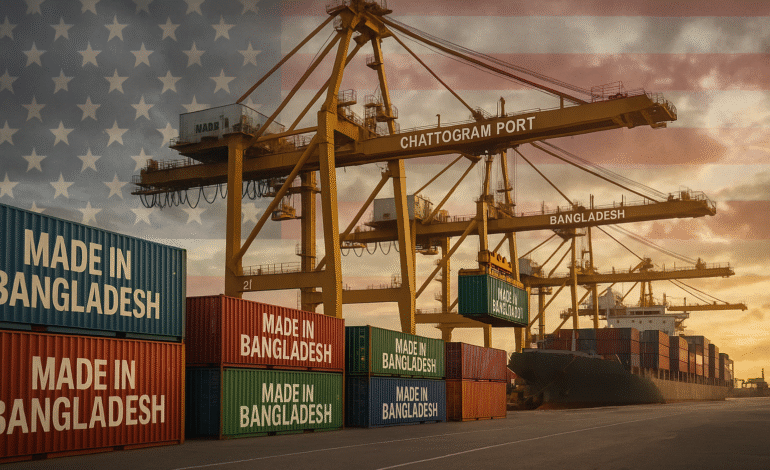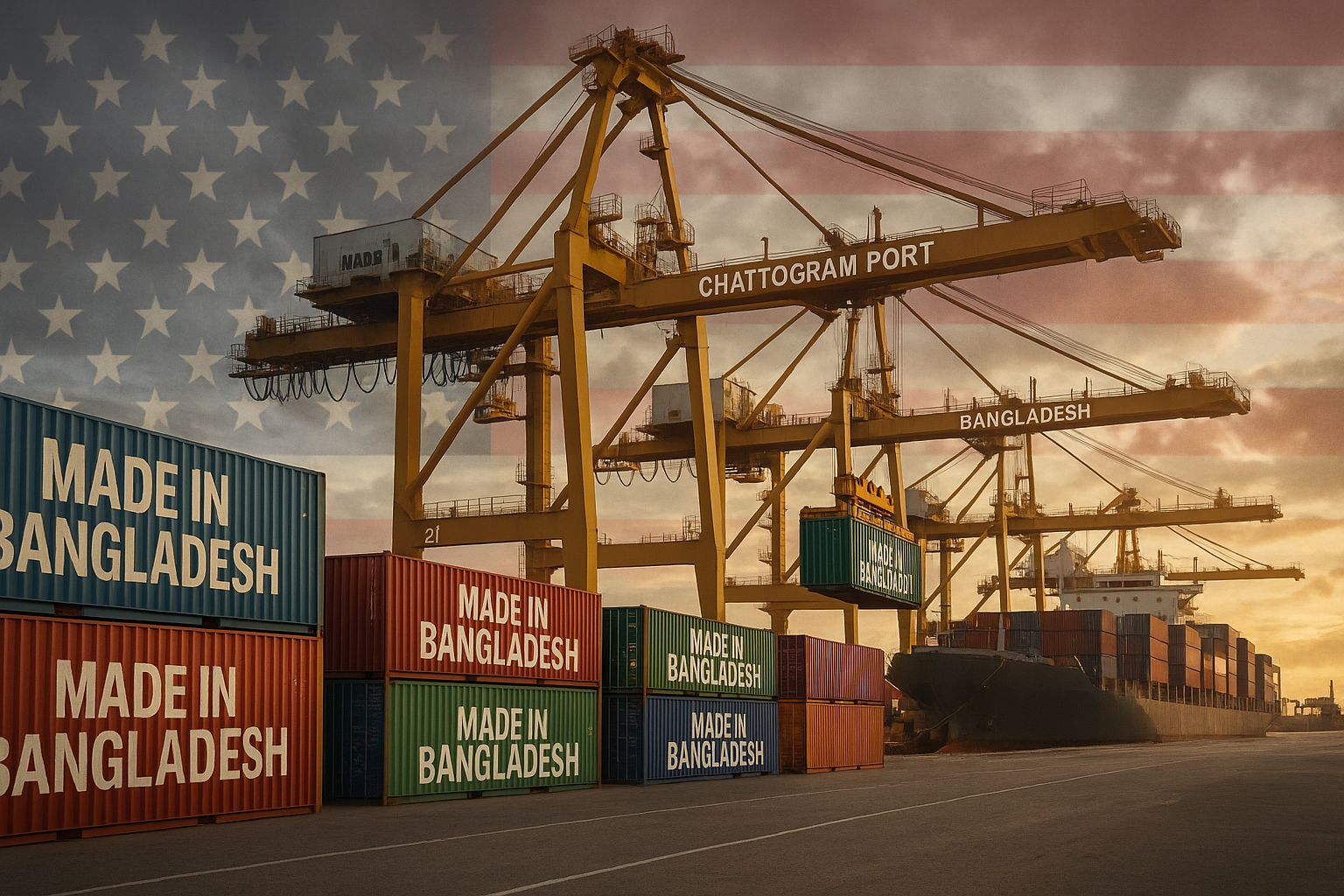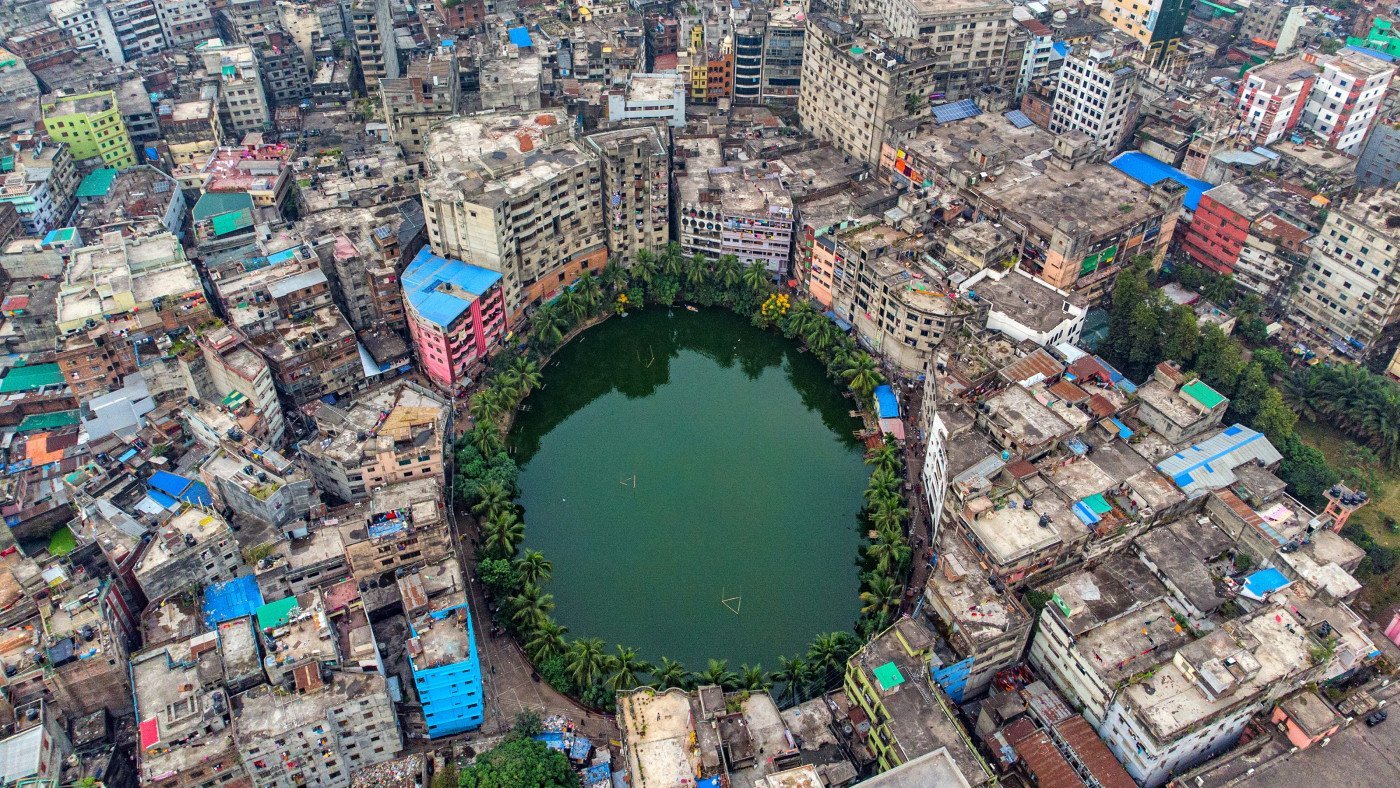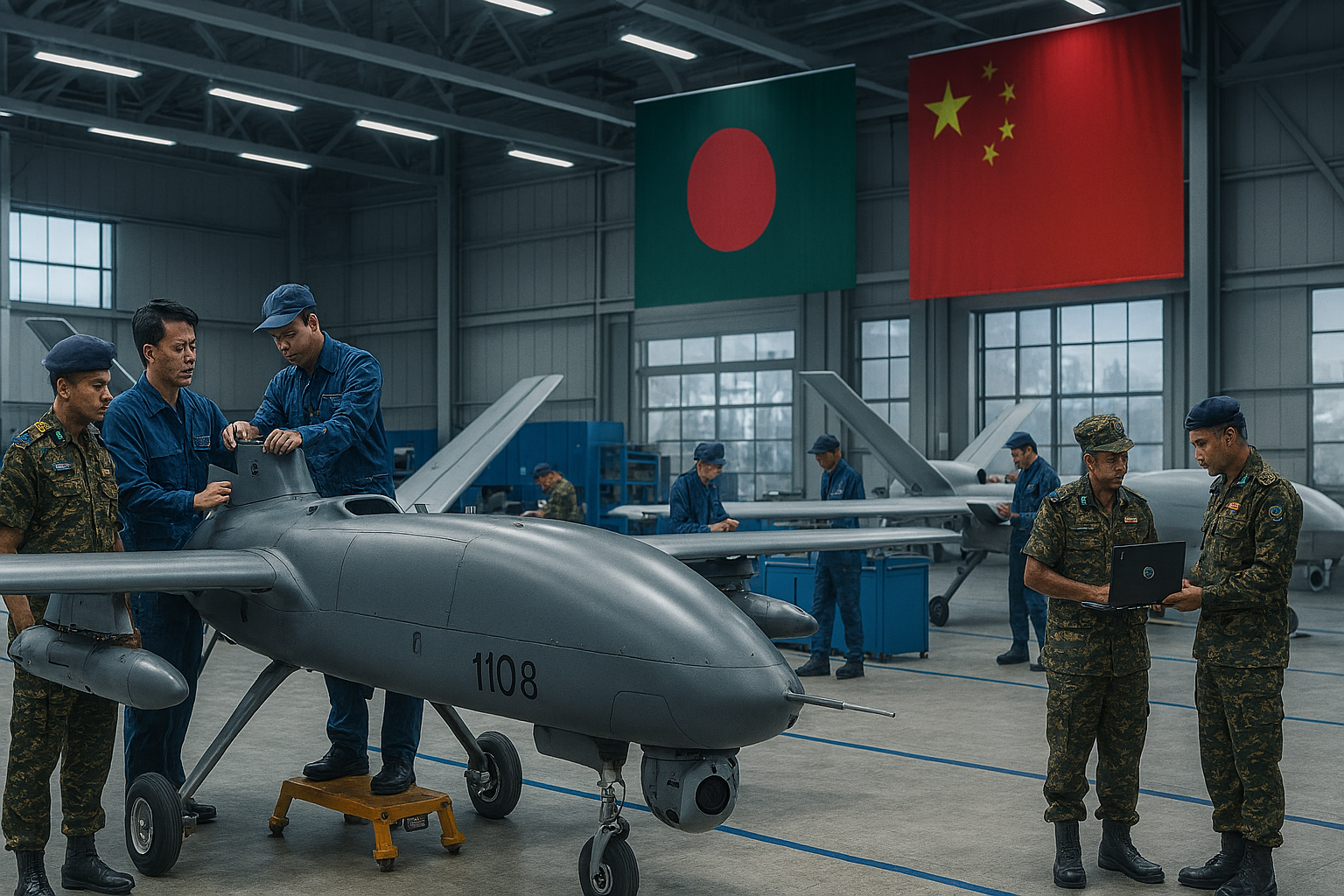US Reciprocal Tariff Hike: Bangladesh’s opportunity, challenges and way out

Bangladesh’s readymade garment industry is at the center of a geopolitical and commercial storm, following recent US reciprocal tariff decisions that materially raise the duty burden on apparel imports.
In mid-2025, the United States announced reciprocal tariffs that raised effective duties on apparel imports from Bangladesh to levels as high as roughly 36.5 percent when combined with existing MFN rates, although subsequent negotiations brought Bangladesh a concession around a 20 percent additional tariff for many articles.
This sharp increase triggered immediate alarm among exporters, brands and workers because the US is one of the main markets for Bangladesh’s apparel shipments, and tariffs of this magnitude can drastically reduce demand, compress margins, and reroute orders to other sourcing countries.
How Bangladesh built its global readymade garment industry dominance?
Bangladesh’s rise to become the world’s second largest apparel exporter is a story of specialization, scale and cost competitiveness. Over three decades the country developed clusters around major port cities, invested in factory capacity that specializes in high-volume knitwear and woven garments, and built close relationships with global buyers seeking low-cost suppliers.
Exports of apparel rose from roughly $18 billion in the 2019–20 period to over $39 billion in calendar 2024–25 according to BGMEA export data, reflecting steady expansion of both knit and woven segments. The industry employs millions directly, mostly women, and supports a vast upstream ecosystem of packaging, logistics, and services, making it pivotal to Bangladesh’s economy.
Why buyers have favoured Bangladesh?
Global brands and retailers have long turned to Bangladesh for several durable advantages. Low labour costs, concentrated supplier bases with significant capacity for mass production, and proven expertise in basic to mid-range garments make Bangladesh ideal for volume-driven sourcing. The country’s clusters deliver economies of scale that reduce per-unit production costs, and many suppliers have upgraded compliance and factory standards after past shocks, improving reliability for large buyers. These structural advantages explain why the readymade garment industry remains attractive despite recent shocks, according to the World Bank garment sector insights.
Exports, orders and immediate impacts
Data from export monitoring in mid-2025 show visible stress. Monthly RMG export receipts have experienced declines in some months versus the previous year, and industry groups warned that the tariff spike could shrink US demand for Bangladeshi apparel sharply, creating order cancellations and production slowdowns (industry warnings).
The government engaged in intense diplomatic and trade negotiations, including agreements to boost purchases of US commodities and aircraft orders, to try to limit tariff spillovers. Early reports indicated some easing, with a negotiated additional tariff of around 20 percent for many apparel items rather than the initially proposed 35 percent, but the effective tariff remains significantly higher than pre-2025 levels. The pace of buyer reallocation and the depth of demand destruction remain the main near-term risks.
Where Bangladesh wins and where rivals gain ground?
Bangladesh, Vietnam, India and Cambodia each offer distinct sourcing propositions. Bangladesh’s edge has been cost per unit and deep specialization in knitwear, making its factories uniquely efficient for large, labour-intensive orders. Vietnam combines faster lead times, better logistics, and growing capability in value-added, technical garments, while India offers proximity to raw materials and a large manufacturing base with strengths in yarn and fabric integration. Cambodia remains a low-cost alternative for certain product lines.
The global apparel trade data show that US tariff changes alter the calculus: higher duties make price the dominant decision variable, but non-price factors like delivery speed, product complexity, sustainability commitments and political risk also shape buyer choices. In that mixed landscape Bangladesh’s sheer scale remains a major asset, but rising duties increase the attractiveness of alternatives for certain buyers and product categories.
Workforce, specialization, and supplier depth
Bangladesh’s workforce and supplier network are not easy to replicate overnight. The concentration of factories in clusters around Chattogram, Dhaka and Narayanganj creates supplier ecosystems that enable rapid scaling of production, efficient subcontracting for specialised processes, and trained cadres of line managers and technical staff. The readymade garment industry’s institutional knowledge, accumulated over decades, supports high throughput of standard apparel items at globally competitive prices, according to the International Labour Organization. This entrenched skill base gives Bangladesh an important buffer in the face of tariff shocks, as buyers seeking volume are often willing to accept some price movement rather than rebuild sourcing networks from scratch.
Margins, buyer reactions, and product mix vulnerabilities
Higher US duties directly hit margins for exporters who already operate on thin profit margins. Unless buyers absorb the tariff through higher retail prices, which is unlikely in a price-sensitive market, exporters will face pressure to reduce costs, shift manufacturing offshore, or accept smaller orders.
The readymade garment industry is also vulnerable because its export basket is concentrated in basic apparel categories, where competition is fiercest and price swing sensitivity is highest. Any sustained contraction in US orders risks idle capacity, layoffs, reduced working capital, and upward pressure on unit costs due to lower utilisation. Early evidence of order deferral in June and July 2025 signaled these risks were materializing (market analysis by Reuters).
Policy and diplomatic maneuvers
The Bangladeshi government moved rapidly to manage the fallout, pursuing both negotiation with US authorities and policy measures at home, including incentives to diversify markets and potential concessions to US interests such as increased import purchases (Bangladesh Ministry of Finance).
Reports indicate Bangladesh secured concessions that reduced the additional tariff in practice for some items, showing that swift diplomacy and trade adjustments can mitigate worst-case scenarios. Nonetheless, these maneuvers come at fiscal cost and political tradeoffs, and they do not erase the structural vulnerability that arises when a single market accounts for a large share of exports.
Social and compliance risks
Beyond macro numbers, the higher tariffs translate into human impacts. Producers under margin stress may cut wages, reduce overtime, or delay investment in compliance and worker safety. The readymade garment industry employs millions, largely women, and any contraction risks reversing social gains in income and female labour force participation.
The sector also still carries historical reputational baggage related to safety and labour rights, which can influence brand decisions when alternatives exist. Maintaining compliance and social standards during a period of price pressure is therefore both a moral and strategic imperative (Human Rights Watch report).
Diversification, value addition, and market development
Tariff pressures, while painful, create urgency for strategic upgrades. Bangladesh can pursue three complementary paths: diversify export markets beyond the US by deepening sales in the EU and emerging markets, move up the value chain into higher-margin, technically complex garments, and invest in backward integration for fabrics and inputs to reduce exposure to international cost swings (UNCTAD trade diversification data).
These steps require targeted public-private investment, skills upgrading, and supply chain finance, but they also increase resilience and reduce the weight of any single external market shock. Early policy discussions and industry proposals already emphasise these moves.
What other countries teach Bangladesh?
Vietnam and India offer lessons. Vietnam invested heavily in infrastructure and worker skilling while diversifying into technical apparel, moving beyond basic knitwear (Vietnam Ministry of Industry and Trade). India’s integrated textile value chain gives it an advantage when raw material security matters.
Bangladesh can adopt selective elements from both models: prioritize logistics and port efficiency, incentivize technological adoption in factories, and support fabric mill development to capture more value domestically. These steps will not be instantaneous, but they are achievable through phased policy and private capital.
Best, middle and worst cases
Best case: Diplomacy and partial concessions limit the tariff impact, buyer demand stabilises, and Bangladesh accelerates market diversification and productivity improvements. Exports recover and the sector upgrades into higher-value products.
Middle case: Tariffs persist at elevated levels, US demand moderates, and Bangladesh retains some market share thanks to low cost, but earnings and employment plateau or decline slightly.
Worst case: Tariff pressures persist or deepen, buyers reallocate large volumes to competitors, factory utilization collapses, and unemployment spikes, causing broader economic stress. Each scenario requires different policy and industry responses, but in all plausible outcomes rapid action to diversify and increase resilience is essential (IMF trade forecast).
Practical Roadmap: Five coordinated moves
- Accelerate market diversification into the EU, Canada, Japan, and rapidly growing African and Latin American markets, leveraging trade agreements and marketing missions.
- Promote backward integration, including incentives to develop domestic fabric mills and yarn production, reducing import dependence and frequency of tariff carve-outs.
- Offer conditional financial relief, such as low-cost working capital and wage subsidies, tied to upskilling and sustainability investments.
- Invest in logistics, port efficiency and industrial park upgrades to lower lead times and improve responsiveness to buyer needs.
- Strengthen labour market programmes to retrain workers for higher-value roles, and enhance compliance monitoring to preserve brand trust (Asian Development Bank).
Implementing these moves requires coordination between government, industry associations like BGMEA, buyers and multilateral partners, but they collectively address both the symptoms and the structural causes of vulnerability.
Risk sharing and long term relationships
Brands and retailers should recognise that abrupt sourcing shifts impose costs on suppliers and communities. Collaborative measures such as longer-term contracts, risk-sharing mechanisms for tariff volatility, and investment in supplier upgrades are mutually beneficial. Preserving long relationships with Bangladeshi suppliers may cost slightly more in the short term, but reduces supply chain disruption risk, and supports social responsibility commitments that many consumers value (McKinsey global apparel insights).
A fragile strength
Bangladesh’s readymade garment industry entered 2025 with strong momentum, built from decades of specialization and scale. The US reciprocal tariff hike is a serious shock that threatens margins, employment and export earnings. At the same time, Bangladesh retains structural strengths that make it an indispensable part of global apparel supply chains (UNCTAD global trade statistics).
The path forward is neither automatic nor impossible. It requires rapid diplomacy, immediate financial cushions for vulnerable producers and workers, and a medium-term strategy of diversification, value addition and resilience building.
If executed well, Bangladesh can emerge from this crisis with a more robust, higher-value readymade garment industry that is less dependent on a single market and better prepared for the next cycle of global trade realignments.




